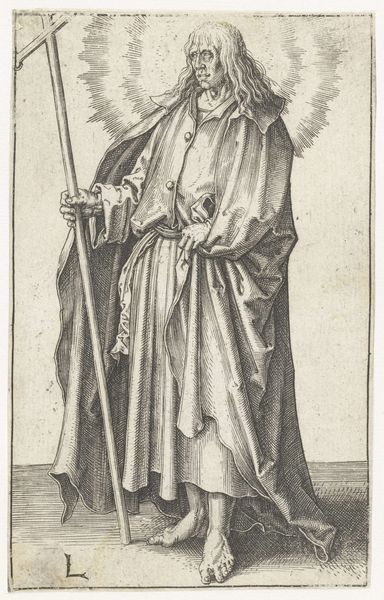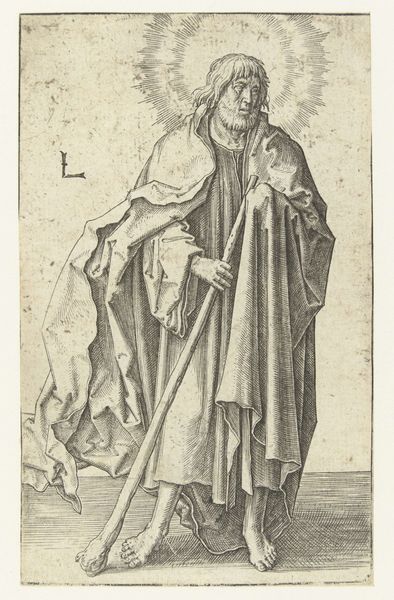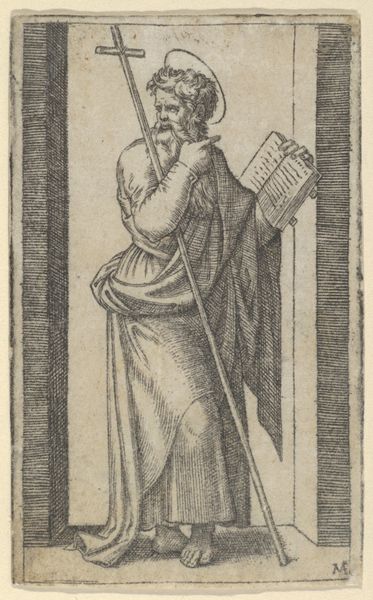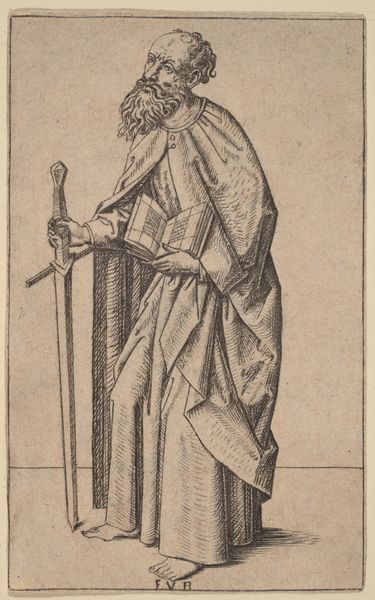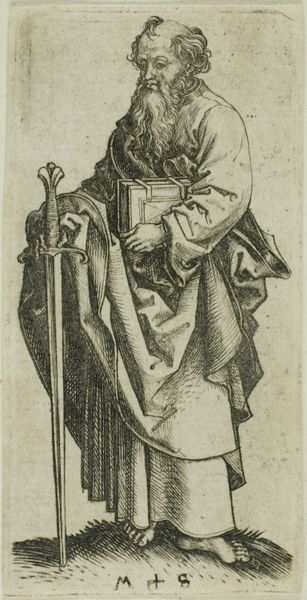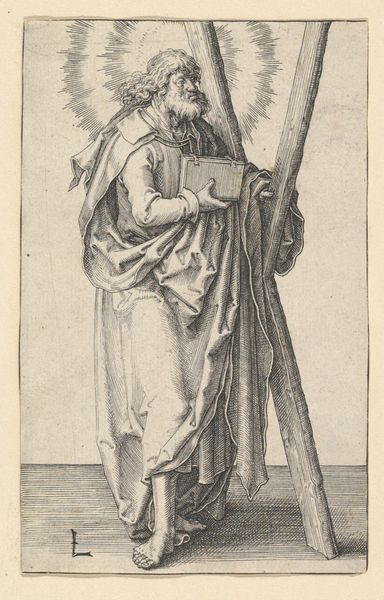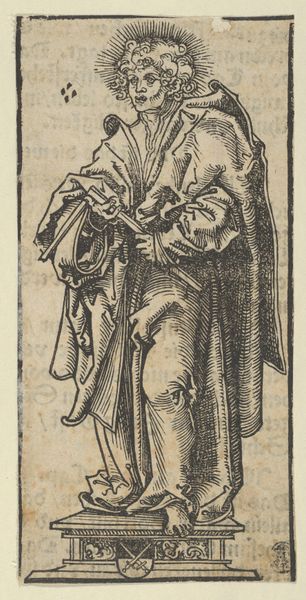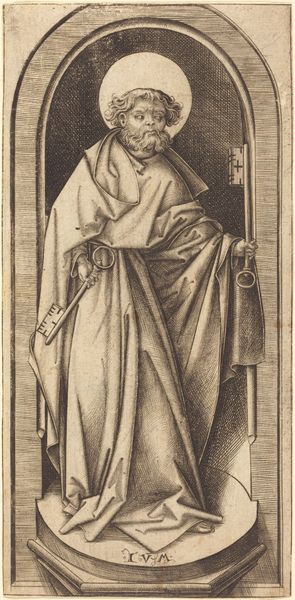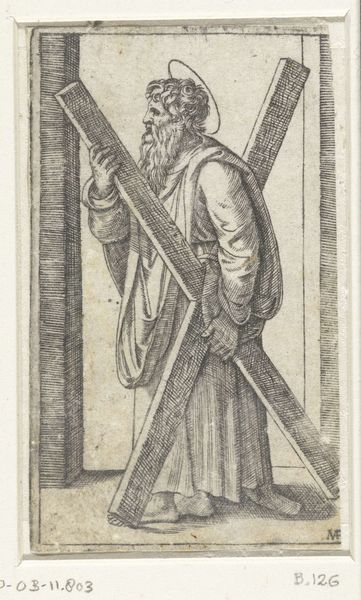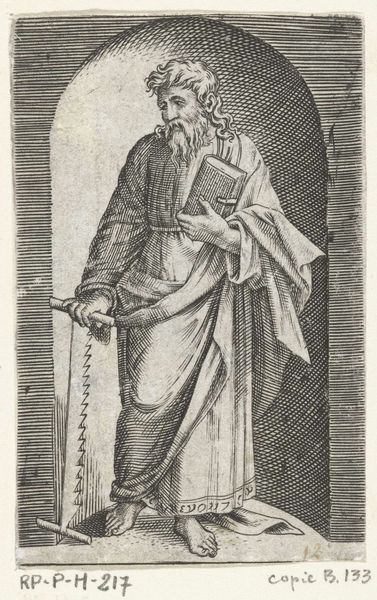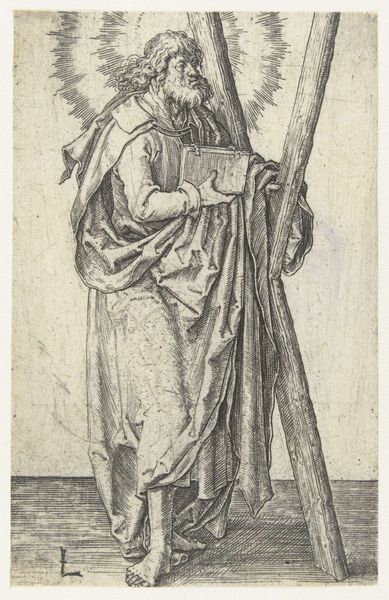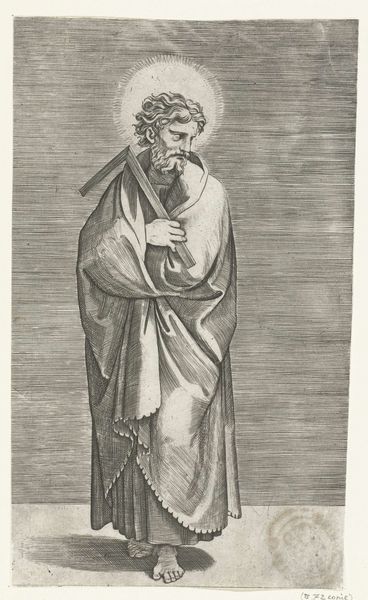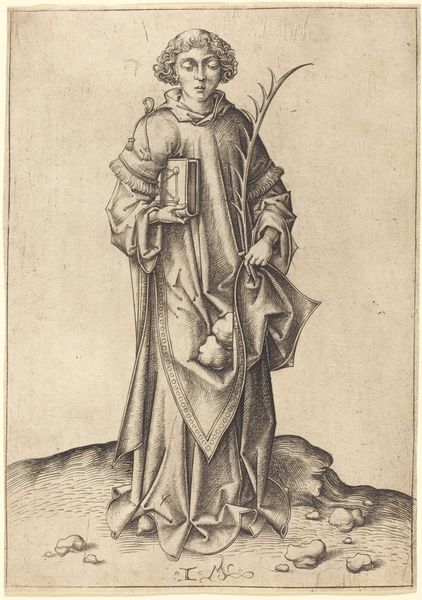
print, engraving
#
portrait
# print
#
figuration
#
portrait drawing
#
northern-renaissance
#
engraving
Dimensions: height 113 mm, width 70 mm
Copyright: Rijks Museum: Open Domain
Editor: Here we have Lucas van Leyden’s engraving, "De apostel Simon," made sometime between 1508 and 1512. The figure fills the frame, and what strikes me immediately is how…earthy he looks, despite the halo. What’s your take? Curator: The image resonates with a specific cultural tension of the Northern Renaissance, where we see the rise of Humanism alongside deeply entrenched religious beliefs. Prints like these weren't just aesthetic objects; they were devotional tools circulating in a rapidly changing society. Notice the saw. Editor: Right, the saw. What does that symbolize in the context of religious devotion at the time? Curator: Consider the socio-political function of religious imagery during the early 16th century. Religious images visually instructed and enforced cultural values. Saint Simon is often associated with the saw. By including this, van Leyden connected this particular print with established visual traditions but was also circulating it within a new, more accessible medium: engraving. How do you think that accessibility changed the role of images like this? Editor: I suppose the increased availability allowed for a more personal engagement, maybe even fostering independent interpretation beyond the church's direct control. Curator: Exactly! And prints were far cheaper, enabling broader social strata to engage with religious figures like Simon. They became domestic, less formally “commissioned”. This shift reflects broader social and economic changes empowering different classes. Did the church authorities have opinions about this democratization of their messages? Editor: That’s an interesting perspective, reframing it beyond purely religious representation and showing the complex interplay between art, society, and power structures at the time. Curator: Indeed. By analyzing van Leyden's "De apostel Simon" through a historical lens, we start understanding its role in negotiating religious and social transformations of the era.
Comments
No comments
Be the first to comment and join the conversation on the ultimate creative platform.
